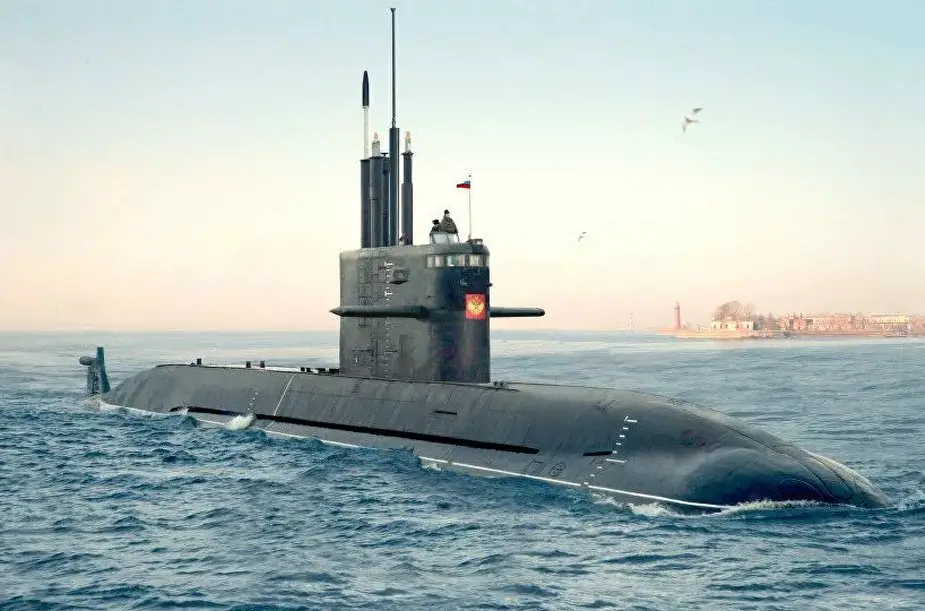The St. Petersburg B-585 Lada-class diesel-electric submarine of project 677 is undergoing test operation and sailed out of Severomorsk to Kronshtadt for scheduled maintenance and upgrade, the Northern fleet said in early April. The sailing of the most noiseless submarine to the Baltic Sea will weaken the defense of Northern fleet SSBN when they sail out to the World Ocean and return back home, the Independent Military Review writes.
 Lada-class diesel-electric submarine (Picture source: Admiralty Shipyards)
Lada-class diesel-electric submarine (Picture source: Admiralty Shipyards)
Some experts suggested sending the St. Petersburg to a museum after overhaul reports appeared. Many Soviet-built lead ships were scrapped earlier than serial warships because of unique (non-serial) elements in their construction, collapse/damage of the hull, power plant and systems during intensive initial operation. The poor state of the overhaul capacity in the North and the Pacific Ocean contributed.
The post-Soviet approach to early scrapping of not very old ships because of a lack of maintenance finances resulted in a major decrease in the strength of Russian submarines. First, second and even third-generation U-boats were scrapped. It triggered a discussion of whether the Navy is flinging the costly hardware around. Only 39 nuclear third-generation submarines of five basic projects were built in 1975-2009.
There were calls to upgrade the remaining subs, as many of them had a big resource for continued operation. An overhaul at a shipyard can install new weapons and increase the firepower. The Defense Ministry has borrowed the approach for submarines of projects 949A, 971, 945, etc.
A similar approach can be used for the St. Petersburg. It can be rearmed with Kalibr and Tsirkon missiles. It would be only logical for the submarine which was designed to destroy adversary U-boats.
The lead sub of project 677 has fulfilled its main mission of a platform for all-round tests of prospective systems. The Rubin Design Bureau said the St. Petersburg had completed all major trials and confirmed the declared characteristics. Besides the mentioned Lira sonar, it tested a low-noise electric propulsion motor with SED-1 permanent magnets, a quick arming device for torpedo launchers which helps fire the whole round of 18 torpedoes in several minutes, the Litiy combat information system on high-reliability modern network technologies, the Apassionata inertial navigational complex, automatic miniature Distantsia communication complex, Parus-98 non-hull-penetrating periscope, direct current diesel generators, nitric fire extinguishing system.
An air-independent power plant can increase the underwater slow-speed (3-5 knots) range two-three times and promote covert operations close to adversary coast. In the past ten years, Rubin bureau progressed a lot in the creation of the power plant, built and tested a demonstrator of technologies and a coastal bench. The next stage has to test an engine prototype on a carrier. The St. Petersburg can do the job.
The power plant can be tested with an available lead-acid battery. However, the design bureau believes it would be more productive to add an ion-lithium battery which has a higher capacity and sustains higher charging currents. The combination needs a diesel generator of proper size. Thus, it is premature to dismiss the St. Petersburg, the Independent Military Review said.
© Copyright 2020 TASS. All rights reserved. This material may not be published, broadcast, rewritten or redistributed.



